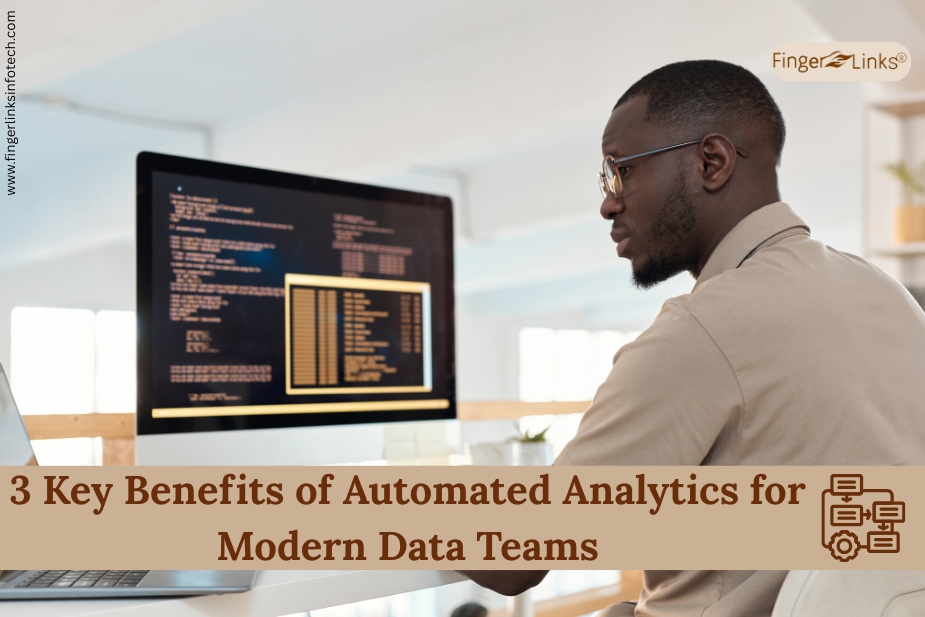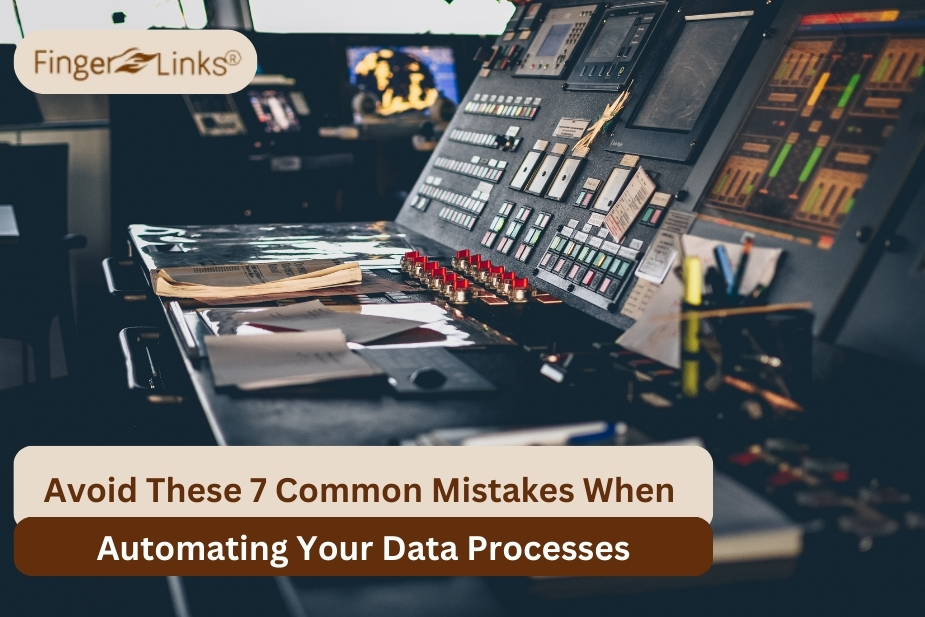3 Key Benefits of Automated Analytics for Modern Data Teams
- ⏰ April-28-2025 |
- ✍️ By Admin |
- 🏷️ In Data Automation
Data is now an essential resource for businesses in today's ever-changing environment. The amount of data collected is enormous, and making sense of it requires effective techniques and tools, such as data automation services. Automated analytics is revolutionizing data teams across all sectors
Data-driven decision-making is made possible by this potent technology, which enables teams to process and analyze massive data sets more precisely and rapidly. This blog post will discuss the three main advantages of automated analytics for contemporary data teams and how it can change how your company handles data.
How Automated Analytics Boosts Accuracy and Speed?
1. Enhanced Accuracy and Precision
Accuracy is critical when dealing with data, especially when it influences strategic business decisions. Manual data analysis is prone to human errors—whether it's in data entry, interpretation, or calculation. These errors can have significant repercussions, from faulty insights to misguided business strategies. Automated analytics addresses this issue by streamlining the process and eliminating human biases and mistakes.
Teams can guarantee greater accuracy in data processing by utilising data automation services. Patterns, trends, and correlations within datasets can be accurately identified using algorithms and artificial intelligence models. For companies that depend on real-time data for decision-making, this degree of precision is essential.
How Automated Analytics Improves Accuracy:
-
Consistency: Automated systems are programmed to follow exact procedures, ensuring that the data is processed the same way every time.
-
Elimination of Errors: By removing manual processes, automated systems reduce the chances of human errors.
-
Data Validation: Many automated analytics tools have built-in checks to validate data, ensuring that only correct and meaningful information is used for analysis.
Ultimately, automation allows data teams to focus on interpreting and acting on insights rather than spending time correcting errors or worrying about data accuracy.
2. Faster Decision-Making with Real-Time Insights
Businesses must act quickly to stay ahead of the competition in the fast-paced digital age. Conventional data analysis techniques can be time-consuming, particularly when working with big datasets. Waiting for reports and insights can delay critical decision-making processes. Even industries like transcription services online, where accuracy and speed are essential, benefit from real-time data processing to streamline operations.
Automated analytics significantly reduces the time it takes to gather and analyze data. With real-time data processing, automated systems can generate actionable insights almost instantaneously. This makes it possible for decision-makers to react to internal requirements, consumer requests, and market shifts more quickly.
Key Aspects of Faster Decision-Making:
-
Real-Time Analytics: Automated analytics tools can process and analyze data as it comes in, providing businesses with up-to-the-minute insights.
-
Quick Reporting: With automated systems, reports are generated instantly, reducing the waiting time for decision-makers.
-
Proactive Insights: Automated analytics can identify trends and patterns in real-time, helping businesses act proactively rather than reactively.
For example, businesses in the e-commerce industry can use automated analytics to track sales data in real-time, allowing them to adjust their strategies swiftly, whether optimizing pricing or addressing supply chain issues. Similarly, human transcription services can streamline audio or video content conversion into text, providing businesses with accurate, timely insights for quick decision-making.
3. Improved Collaboration Across Teams
Data analysis is no longer confined to a single department; modern data teams often consist of professionals with different skills—data scientists, analysts, IT professionals, and business leaders. Effective collaboration across these diverse groups is essential for leveraging data to its full potential. However, without the right tools, collaboration can become cumbersome and inefficient.
Data automation services can foster collaboration by providing a unified platform where all team members can access the same data and insights in real time. These tools often include intuitive dashboards, easy-to-understand visualizations, and collaborative features that facilitate sharing insights across teams.
How Automated Analytics Promotes Collaboration:
-
Centralized Data: Automated analytics tools provide a single, centralized platform where data from various sources can be integrated, making it easy for teams to work together.
-
Visualizations and Dashboards: With automated analytics, teams can visualize complex data in charts, graphs, and other intuitive formats, which simplifies understanding and sharing insights.
-
Collaborative Features: Many analytics platforms offer sharing and commenting features that allow team members to provide feedback, share insights, and work together more effectively.
This improved collaboration can lead to better decision-making, as data teams can pool their expertise and insights to solve complex problems. Moreover, automation allows business leaders to stay informed about key metrics without waiting for individual reports from multiple departments.
Conclusion
Automated analytics is undeniably transforming how data teams work, offering remarkable accuracy, speed, and collaboration improvements. With the ability to process large datasets quickly and accurately, automated systems empower teams to make data-driven decisions in real-time, thus staying ahead of the curve in today's competitive landscape. Additionally, these tools promote seamless collaboration across departments, allowing businesses to leverage their collective expertise for better outcomes.
Partnering with an expert provider can make all the difference for businesses looking to implement data automation services. Fingerlinks Infotech is at the forefront of offering innovative solutions in data automation and analytics, helping companies unlock the full potential of their data. Embrace automated analytics today and take your data team's performance to the next level.
FAQs
Q1. What are data automation services?
Ans. Utilising technology to automate data collection, processing, and analysis is known as data automation services. As a result, data analysis becomes more accurate and efficient while requiring less manual labour.
Q2. How can automated analytics improve my business?
Ans. By offering quicker, more precise insights that support prompt decision-making, automated analytics can help your company grow. It also enhances collaboration across teams, leading to better overall results.
Q3. What industries benefit the most from automated analytics?
Ans. Industries such as e-commerce, finance, healthcare, and marketing can greatly benefit from automated analytics due to the large volumes of data they handle and the need for real-time insights.





.jpg)


.png)

.jpg)

